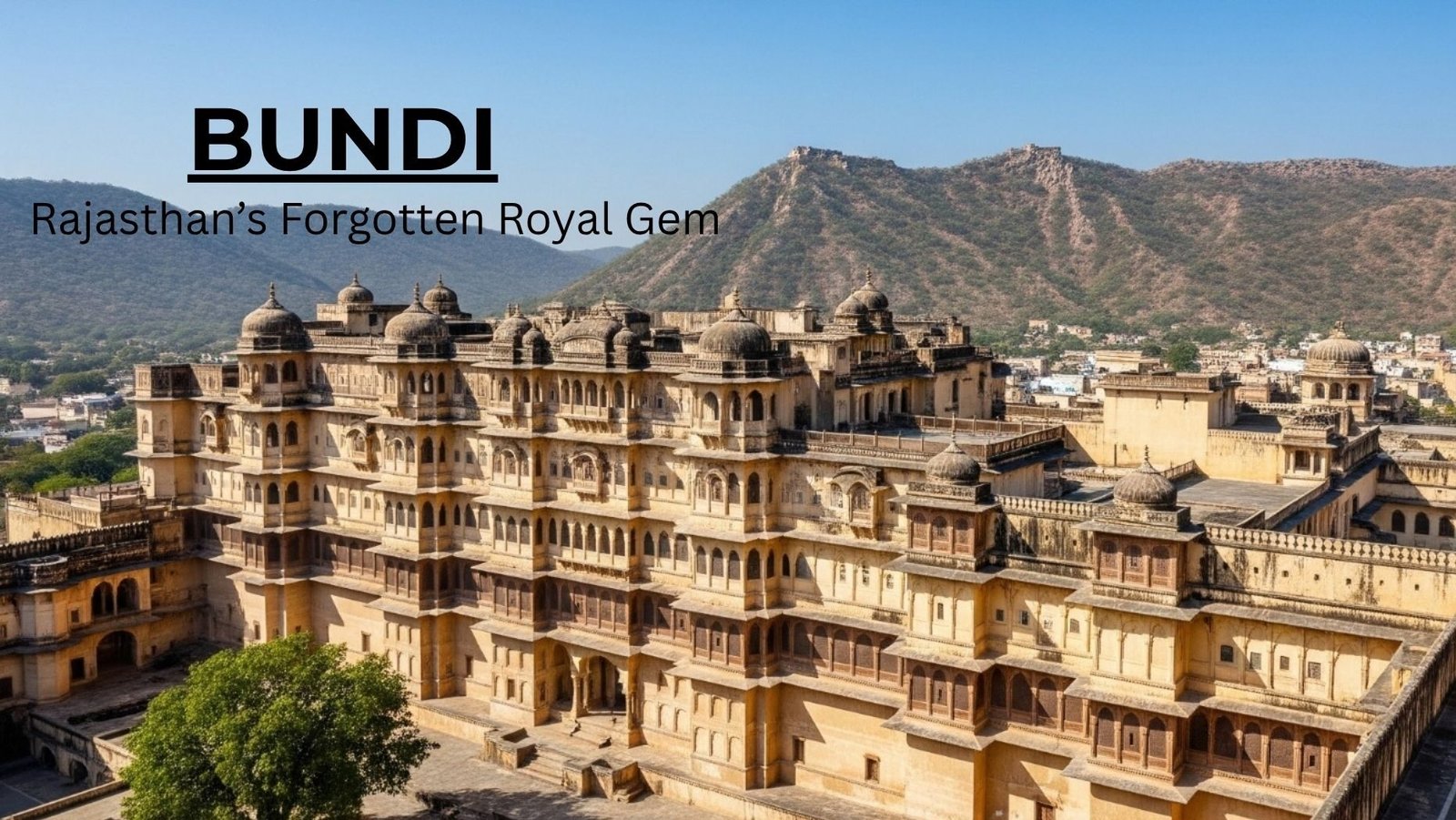From Delhi’s relentless chaos to Bundi’s forgotten courtyards—today, I take you on a journey to one of Rajasthan’s most overlooked royal cities. While crowds flock to Jaipur and Udaipur, Bundi slumbers peacefully in the shadow of its imposing fort, its history fading gracefully into the sandstone. This isn’t a story of grandeur, but of quiet discovery, of finding profound beauty in the places time seems to have left behind.
For those planning a trip, here’s a quick overview. The best way to reach Bundi is a road trip from Delhi, which allows you to watch the landscape change from urban sprawl to the rustic plains of Rajasthan. The city’s main attractions are the magnificent Taragarh Fort and the exquisite Chitrashala art gallery within it. Don’t miss the stunning Raniji ki Baori (Queen’s Stepwell). For the best chai in town and a dose of local life, a visit to Krishna Tea Stall is an absolute must.
The Journey from Chaos to Calm
The long drive from Delhi is a meditation in itself. The city’s concrete gives way to dusty highways and then to the arid, resilient landscapes of the Hadoti region. Arriving in Bundi feels like entering a different era. I checked into a heritage homestay in the old town, its walls cool against the afternoon sun. The narrow lanes, some painted in the traditional indigo of Kale Mahalon ki Gali, were quiet, the air scented with spices and history.
Exploring the Echoes of Royalty: Forts, Palaces, and Stepwells
Bundi’s story is one of valour and decline. Named after the chieftain Bunda Meena, it was ruled for centuries by the Hada Chauhans before its prominence faded after the state of Kota separated in 1624. This history is etched into its monuments.
- Taragarh Fort: The climb to this 14th-century fort is steep and, I’ll admit, left me breathless. But the reward is unparalleled. The fort is largely empty, its courtyards echoing only with the flutter of pigeons. It feels less like a monument and more like a massive, abandoned sculpture left to the elements. Important Tip: The fort entry closes at 5 PM, so plan your visit accordingly.
- Raniji ki Baori (Queen’s Stepwell): Rajasthan’s step-wells are not just reservoirs; they are subterranean water temples. This one, built as a son’s tribute to his mother, is one of the most intricate. Its symmetrical steps and ornate carvings descend into the cool earth, a masterpiece of architecture and hydrology.
- 84-Pillared Cenotaph: Standing gracefully by Nawal Sagar Lake, this chhatri is a place of profound stillness, especially as the sun sets and casts long shadows through its many pillars.
The Living Soul of a Fading Town
The true magic of Bundi lies not in its empty palaces, but in its living, breathing soul.
- Krishna Tea Stall: My days started and ended here. Krishna ji, the owner, is a local legend. His chai, spiced to perfection, is arguably one of India’s best. Sitting on a simple bench, sipping tea, and watching the town wake up became a cherished ritual.
- Yug, the Miniature Artist: In a small studio, I met Yug, a young artist keeping the famous Bundi School of Miniature Art alive. This art form, influenced by both Mewar and Mughal styles, is known for its fine details. Watching him work was a lesson in patience and tradition. Supporting local artists like him is crucial for preserving this heritage.
- The Akhada by the Lake: One evening, I stumbled upon an akhada (traditional wrestling school) by Nawal Sagar Lake. Watching the young wrestlers practice their discipline with such focus, their bodies caked in mud, was a powerful glimpse into the town’s living culture.
Art, Inspiration, and a Moment of Stillness
- Chitrashala (The Ummed Mahal): This is Bundi’s crown jewel. Tucked inside the fort complex, this open-air art gallery is covered in exquisite turquoise and green frescoes depicting scenes from mythology. It’s managed by the ASI, and a useful tip is that entry to Chitrashala itself is free; you just need to inform the guards you are only visiting this section.
- Sukh Mahal: This modest lakeside palace is where Nobel laureate Rudyard Kipling stayed and wrote parts of his novel Kim. It’s easy to imagine him finding inspiration for The Jungle Book here, looking out at the serene lake and the surrounding wilderness.
A Conscious Traveler’s Guide to Bundi
- Visit in the Right Hours: Explore the forts and palaces in the early morning or late afternoon to avoid the harsh Rajasthani sun.
- Stay in a Heritage Homestay: This is the best way to experience authentic Bundi hospitality and contribute directly to the local economy.
- Respect Fragile Structures: Many of Bundi’s monuments are underfunded and fragile. Do not climb on weak walls or leave any trace behind, especially at Nawal Sagar Lake.
- Embrace the Simplicity: Enjoy a simple breakfast of poori-sabzi from a street vendor or a leisurely coffee at Cafe Romeo. The joy of Bundi is in its simple, unhurried pace.
A Final Reflection
Sometimes, forgotten places hold the most remembered moments. Bundi didn’t try to impress me with grandeur or polish. Its beauty was quiet, weathered, and deeply authentic. I left feeling like I had found a secret I didn’t know I was looking for, a story whispered from its empty courtyards and the warm smiles of its people.

Leave a Reply